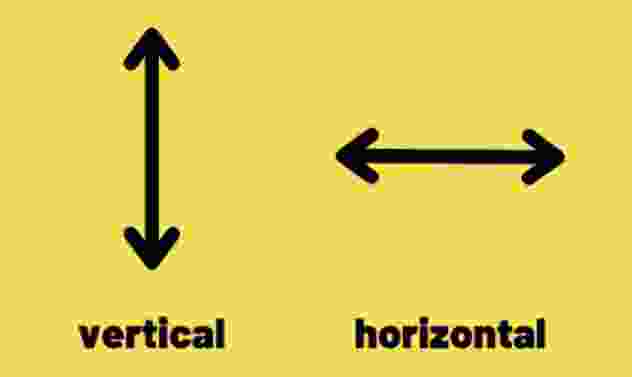The concepts of “horizon” and “vertical” are fundamental to our understanding of spatial orientation and visual perception. These terms influence how we perceive the world around us, whether it’s the vast expanse of the sky meeting the Earth or the alignment of objects along a vertical axis. This exploration aims to unravel the differences between horizon and vertical, delving into their definitions, visual implications, and the ways in which they shape our perception of space.
Defining the Horizon: Where Sky Meets Earth
Definition and Core Concept
Horizon
The horizon is an imaginary line that appears to separate the Earth from the sky when observed from a specific vantage point. It represents the farthest point at which the sky and the land or sea seem to converge, creating a visual boundary.
Key Characteristics of the Horizon
Visual Perception
The horizon is a product of visual perspective, influenced by the observer’s height and the topography of the surrounding landscape. It can vary based on factors such as altitude, geographical features, and atmospheric conditions.
Scenic Implications
The horizon plays a significant role in landscape photography and art, often serving as a focal point or contributing to the overall composition. It influences the perceived depth and scale of a scene.
Celestial Connection
In astronomy, the horizon is crucial for celestial observations. Objects such as the sun, moon, and stars appear to rise above or set below the horizon, marking key events in the celestial cycle.
Exploring the Vertical: A Perpendicular Perspective
Definition and Core Concept
Vertical
Vertical refers to the perpendicular direction aligned with the force of gravity. It is the opposite of horizontal, and objects or lines that are vertical stand upright, extending straight up and down.
Key Characteristics of the Vertical
Alignment with Gravity
Vertical alignment is determined by the force of gravity, with objects oriented in a direction perpendicular to the Earth’s surface. This alignment is inherent in structures, architectural elements, and natural features.
Architectural and Design Implications
In architecture and design, the vertical orientation is employed to create structures that stand upright and convey a sense of stability. Tall buildings, columns, and trees are examples of vertical elements.
Visual Impact
Vertical lines in visual arts and photography can evoke a sense of strength, stability, and formality. They contribute to the overall visual balance and composition of an image.
Comparative Analysis: Horizon vs. Vertical
Nature of Orientation
Horizon: Represents the perceived boundary between the sky and the Earth.
Vertical: Indicates the perpendicular direction aligned with gravity.
Visual Influence
Horizon: Influences the perceived depth and scale of a landscape.
Vertical: Conveys stability, strength, and formality in visual arts and design.
Role in Astronomy
Horizon: Crucial for celestial observations, marking the apparent rise and set of celestial bodies.
Architectural Application
Horizon: Less relevant in architectural design.
Vertical: Integral to architectural stability, seen in structures like tall buildings and columns.
Scenic and Artistic Significance
Horizon: Often a focal point in landscape photography and art.
Vertical: Contributes to visual impact, stability, and balance in artistic compositions.
Conclusion
In the dance of perception and spatial orientation, the concepts of horizon and vertical play distinct yet interconnected roles. The horizon, marking the meeting point of Earth and sky, influences our sense of space and provides a canvas for celestial events. Vertical, on the other hand, aligns with gravity, shaping the stability of structures and contributing to the visual impact of art and design.
For further exploration into the concepts of horizon and vertical, you can refer to the relevant pages on Wikipedia for horizon and Vertical direction for vertical.
As we navigate the complexities of visual perception and spatial understanding, an appreciation for the nuances of horizon and vertical enriches our interaction with the world. Whether gazing at a distant horizon that stretches across a landscape or appreciating the vertical lines that lend strength to architectural marvels, these concepts invite us to contemplate the fundamental forces and perspectives that shape our perceptual experiences. In the grand tapestry of our surroundings, horizon and vertical stand as silent guides, shaping the way we perceive and interact with the spaces we inhabit.
















